
If you have spent any time at all in the construction trades, especially commercial construction, you have come across hazardous materials, it is found everywhere from paint, insulation, roofing, siding, plumbing, electrical components, flooring materials and mastics, just to name a few.
Hazardous Materials like…
- Lead
- Asbestos
- Mercury
- Mold
- Polychlorinated Biphenyls (PCB’s)
- Silica dust
This article will cover each of these… 6… commonly found hazardous materials, where they are commonly found, why they are dangerous, how it is introduced into your body and lastly... what you need to do when these substances are encountered.
Hazardous Material No. 1 - LEAD

Lead is found in many places in both residential and commercial structures, as a contractor, you WILL come across Lead containing material, probably many times. it can be in many places but is commonly found in…
- Paint & surface coatings
- Acoustic dampening baffles
- Cast iron pipes
- Solder
- Lead glass & stained glass
- Many other places
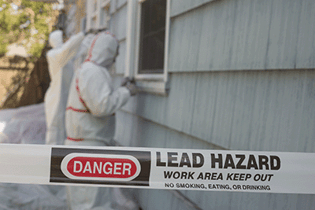 The reason Lead is dangerous is because when it is introduced into the body either by inhalation or ingestion and once it is in your bloodstream it can build up in different organs and cause irreversible damage and even death. So, it is a serious health hazard.
The reason Lead is dangerous is because when it is introduced into the body either by inhalation or ingestion and once it is in your bloodstream it can build up in different organs and cause irreversible damage and even death. So, it is a serious health hazard.
What tasks cause lead exposure?
Exposure to lead can occur in almost any trade. Workers at highest risk for lead exposure include those involved in construction, demolition, painting, carpentry, plumbing, welding, heating and air conditioning, building maintenance and repair, electrical, renovation, flooring removal and installation and tenant improvement.
What to do when you encounter Lead?…
Never remove it yourself unless you’re a certified, licensed & bonded hazardous waste abatement contractor. For health, legal and financial reasons you must always have it removed by a licensed professional.
Hazardous Material No. 2 - ASBESTOS

This is one we have heard of for years, asbestos was once a highly valued substance, it was a great, versatile product. It just had one drawback,… it killed people that came in contact with it!... so, starting in the mid 1980’s asbestos was identified as a carcinogen and, in the US, and many other countries, was banned in almost all applications. Asbestos though, is still found in a wide variety of places from…
- ceiling tile
- popcorn ceilings
- Siding
- Roofing
- insulation, both on pipe, ceiling, and walls
- floorcoverings
- Mastics
- breakers
- Many other places…
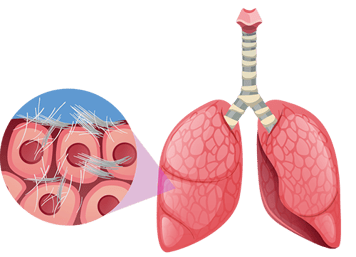 The reason asbestos is so dangerous is because, when material containing asbestos is disturbed, fine particles are released into the air and breathed into the lungs and lodges in the lining of the lungs and the body cannot get rid of it, causing scar tissue to build up. Eventually, the development of diseases like Mesothelioma, lung & other cancers, as well as heart disease can develop… really bad stuff. And if you’re a smoker, you are at a much higher risk! How much more of a risk? It is estimated to be 50 – 85 times higher!
The reason asbestos is so dangerous is because, when material containing asbestos is disturbed, fine particles are released into the air and breathed into the lungs and lodges in the lining of the lungs and the body cannot get rid of it, causing scar tissue to build up. Eventually, the development of diseases like Mesothelioma, lung & other cancers, as well as heart disease can develop… really bad stuff. And if you’re a smoker, you are at a much higher risk! How much more of a risk? It is estimated to be 50 – 85 times higher!
Here is the scary part of asbestos, while it takes years, sometimes more than 30, to make a person sick and often kill, it may only take one event of exposure to this material to cause such deadly health problems.
What tasks cause asbestos exposure?
Anything that disturbs asbestos... So, Plumbers, general contractors, shipyard workers, auto mechanics, flooring, demolition, siding, roofing contractors as well as HVAC workers and building maintenance workers could inadvertently disturb asbestos and have the risk of asbestos exposure.
What to do when you encounter Asbestos?...
When you encounter asbestos… never remove it yourself unless you’re a certified, licensed & bonded hazardous waste abatement contractor. For health, legal and financial reasons you always have it removed by a licensed professional... what's next?
Hazardous Material No. 3 - MERCURY
For many years we have known to be cautious of products like thermometers, thermostats, some electrical switches as well as fluorescent & C.F.L. light bulbs as potential sources of mercury exposure… But in recent years another possible source has been identified,… this source is mostly found is some Rubber & Polyurethane flooring, Gym floors mostly … though, it is important note, that other flooring applications could be contaminated as well. Floors in hospitals, manufacturing plants and other commercial settings could have contaminated flooring, anywhere where a cushioned, non-slip all weather flooring is installed is a potential candidate... Floors with Mercury contamination were mostly manufactured from the 1960’s – 1990’s. Not all, but some of these flooring materials from this era tested positive for Mercuric Acetate... (Mercury)
Mercury is dangerous, like other materials it is introduced into the body either by inhalation and ingestion, one contamination vector is off gassing over a long period of time and continuous breathing of the contaminated air introduces the Mercury into your system.
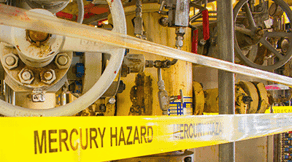 This off-gassed material can also build up on furniture and other objects,... what happens is you touch these objects then touch your mouth or food you are eating or preparing for others and Mercury is introduced into your system that way. And once it is in your bloodstream it can build up in different organs and cause irreversible damage and even death. Mercury can also cause a variety of mental issues; symptoms of prolonged exposure range from…
This off-gassed material can also build up on furniture and other objects,... what happens is you touch these objects then touch your mouth or food you are eating or preparing for others and Mercury is introduced into your system that way. And once it is in your bloodstream it can build up in different organs and cause irreversible damage and even death. Mercury can also cause a variety of mental issues; symptoms of prolonged exposure range from…
Insomnia, headaches, tremors, mood swings, irritability, nervousness, weakness twitching, and decreased mental function. Strangely, even excessive shyness can be a symptom. So, Mercury is a serious health Hazzard and must be avoided.
What tasks cause Mercury exposure?
Much like other contaminates, the highest risk is when the material is disturbed, scrubbing the material or removing it exposes the contractor and other people in the general area to a much higher level of exposure.
What to do when you encounter Mercury?...
When you encounter Mercury… never remove it yourself unless you’re a certified, licensed & bonded hazardous waste abatement contractor. For health, legal and financial reasons you always have it removed by a licensed professional.
(This paragraph seems to be repeating itself. The reason is because when dealing with Hazardous Materials, you ALWAYS leave it to the qualified abatement contractor... Next?...
Hazardous Material No. 4 - MOLD

Molds can be found almost anywhere; if you have moisture and oxygen mold can grow on virtually any organic substance, wood, paper, carpet, foods, and insulation. When excessive moisture accumulates in buildings or on building materials, mold growth will often occur, particularly if the moisture problem remains undiscovered for an extended period of time.
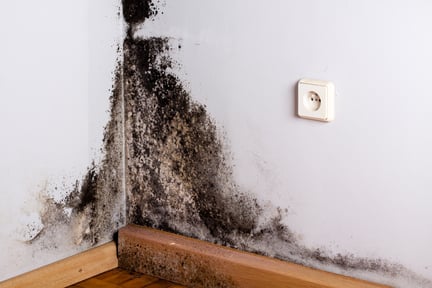
It is impossible to completely eliminate all mold. But it can be controlled by controlling the moisture in a building.
There are many types of molds, and… All molds have the potential to cause health problems, some though, are more likely to cause health problems than others... Molds can produce allergens that can trigger allergic reactions or even asthma attacks in people allergic to mold. Other molds are known to produce potent toxins and/or irritants. Potential health concerns are an important reason to prevent mold growth and to remediate or clean up any existing indoor mold growth.
There are four main factors that determine the effect mold will have on you
- The amount of exposure
- Duration of exposure
- Your proximity to the mold
- How susceptible you as an individual are, some people have serious negative effects with just a small exposure while others can have a serious exposure with no ill effects at all.
Over time, repeated exposure to mold can cause serious conditions like serious respiratory problems, fatigue, chronic sinusitis, organ damage, asthma and even Legionnaire’s disease.
What tasks cause Mold exposure?
Working for an extended time in an environment with mold subjects you to exposure. Also, as contractors, removing material contaminated with mold are times that exposure occurs as well. Therefore it is important to always use appropriate PPE (Personal Protective Equipment) when removing mold-containing material.
What to do when you encounter Mold?...
Can a contractor remove mold-contaminated material safely and legally? Unlike other materials considered hazardous, in the United States, The US Department of Labor’s Occupational Safety and Health Administration (OSHA) that regulates workplace safety and requires all employers to comply with a variety of health and safety standards. surprisingly, as of this writing, there’s no uniform federal law governing standards for mold removal, or how much mold is allowed in any given building. These laws fall to the states, which makes life difficult for anyone wondering what their protections or liability are under the law; so, we must research the mold removal laws for our state or province. But currently, there are no federal standards or recommendations, (e.g., OSHA, NIOSH, EPA) for airborne concentrations of mold or mold spores… So, check with your local authorities before removing mold.
Hazardous Material No. 5
Polychlorinated Biphenyls (PCB’s)

Even though polychlorinated biphenyls (PCBs) have not been manufactured in the U.S. for over forty years, they continue to be present in building materials, including…
- in paint
- caulk
- joint materials
- siding, roofing
- light ballasts
PCBs are more common in structures built or renovated between 1950’s and 1980’s. The ongoing presence of PCBs can create risks for contractors as well as building occupants.
The most common health problems for people exposed to large amounts of PCBs are skin conditions such as acne and rashes. But, studies of PCBs in humans have found increased rates of melanomas, gall bladder cancer, liver cancer, biliary tract cancer, gastrointestinal tract cancer, and brain cancer, and may be linked to breast cancer... So, PCB’s are certainly a Hazardous Material.
How is a person contaminated? PCBs can enter the body by eating or drinking contaminated food, skin contact or through the air we breathe. PCBs are easily absorbed by the body and are stored in fatty tissue. PCBs are not eliminated well, so they can accumulate in the body.
What to do when you encounter PCB’s?...
The laws are surprisingly not that “Cut & Dry” as they are for materials like asbestos and lead. In many places there are no laws expressly forbidding the removal of PCB containing material. So, as with mold, check your local authorities and apply their guidelines. If you are able to legally remove PCB containing materials, you must always…
- Perform all work in accordance with local rules and guidelines
- Employing appropriate work practices and protective measures, have and use appropriate PPE equipment
- Leaving the work area clean and safe for building occupants after completing the project
- Properly disposing of waste materials
Hazardous Material No. 6
Silica Containing Dust

In recent years the harmful effects of silica dust have been brought to our attention because of its harmful effects on our health.
Crystalline silica is a common mineral found throughout the earth. Materials like sand, stone, concrete, and mortar contain crystalline silica. It is also used to make products such as pottery, glass, ceramics, bricks, and artificial stone.
 Respirable crystalline silica (particles that are small enough to "Float" and be inhaled) are very small particles at least 100 times smaller than ordinary sand you find on beaches and playgrounds...
Respirable crystalline silica (particles that are small enough to "Float" and be inhaled) are very small particles at least 100 times smaller than ordinary sand you find on beaches and playgrounds...
These particles are created when contractors are cutting, sawing, grinding, or drilling materials like concrete, brick, block, and mortar. Activities such as abrasive blasting with sand; sawing brick or concrete; sanding or drilling into concrete walls; grinding mortar; manufacturing stone & concrete countertops, or ceramic products result in worker exposure to respirable crystalline silica dust. It is estimated that over 2.3 million people in the U.S. are exposed to silica at work.
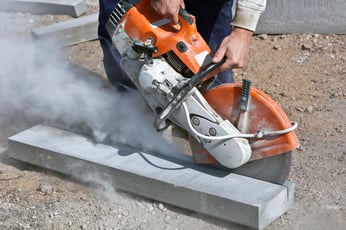
Workers who inhale these very small crystalline silica particles are at increased risk of developing serious silica-related diseases, including:
- Silicosis, an incurable lung disease that can lead to disability and death
- Lung cancer
- Chronic obstructive pulmonary disease (COPD)
- Kidney disease
How do we as contractors deal with Silica dust?
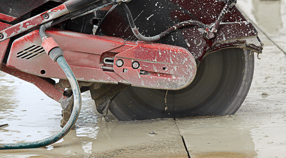
There are two common ways Silica dust is mitigated...
- Water application: By applying water while cutting concrete, you trap the silica-containing dust in the water and keep your workplace safe.
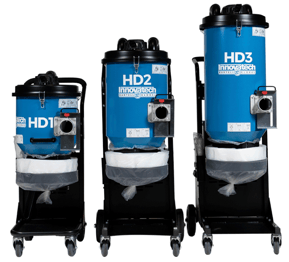
- Hepa filter dust extraction: with the correct Hepa filter system you are able to remove 99.97% of Friable, Respirable, particles from the environment...
A couple of additional points...
When using water to remove the silica dust, the slurry you create is considered hazardous waste and must be disposed of correctly.
FOR MORE INFORMATION ON REMOVING CONCRETE SLURRY CLICK HERE
Second, when using a dust extraction system you MUST use a Hepa vac system, not a "shop-vac"... it will clog quickly, it is not safe as it does not remove enough particles from the air and here in the U.S. O.S.H.A. has really big fines for contractors caught not using Hepa filter vacs.
FOR MORE INFO ON HEPA FILTERS CLICK HERE
Final note on dealing with Hazardous Materials…
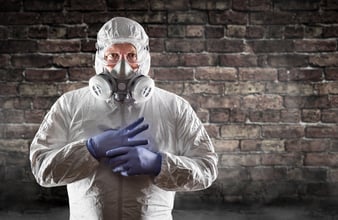
If you suspect a material on your jobsite may contain hazardous substances, get it tested, and if the material is “Hot” and you as a contractor are not well trained and certified to remove it... sub-contract the removal out to a licensed & Bonded contractor!
Err on the side of safety and you protect yourself, your employees, and your customers' health,... as well as your financial well-being from fines and lawsuits.

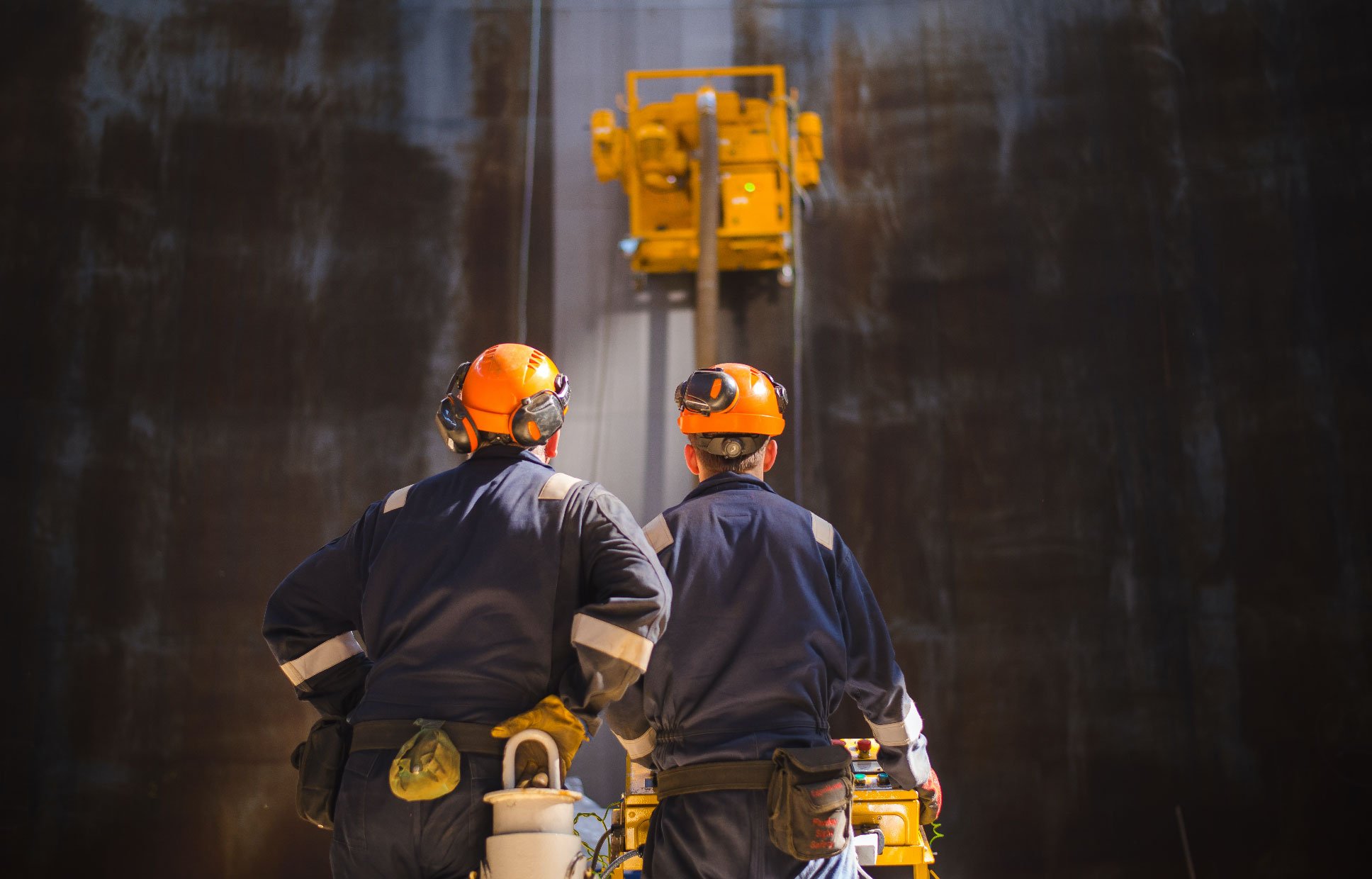
 By
By 